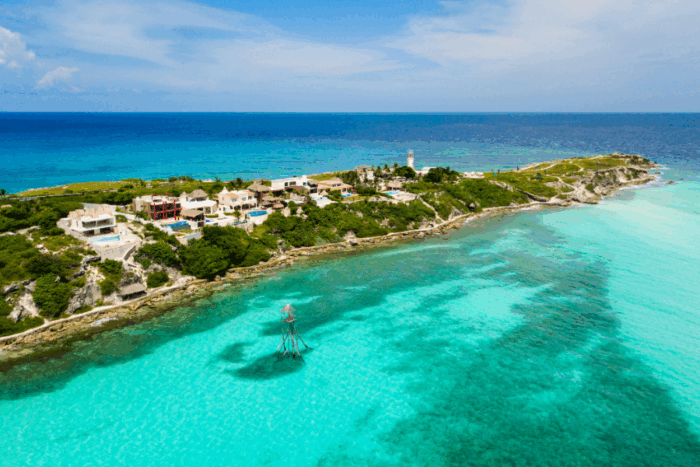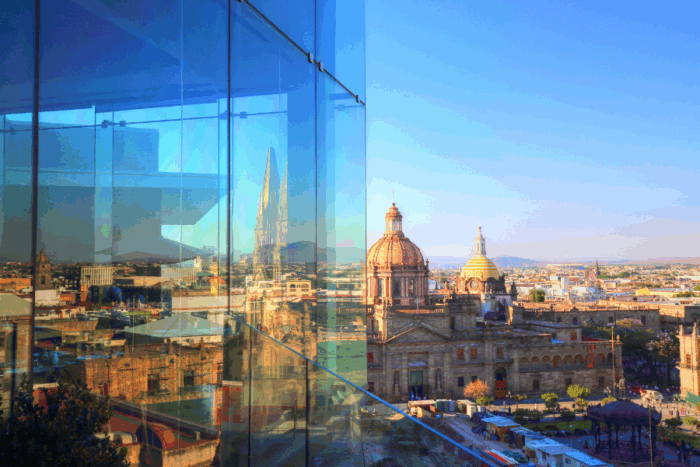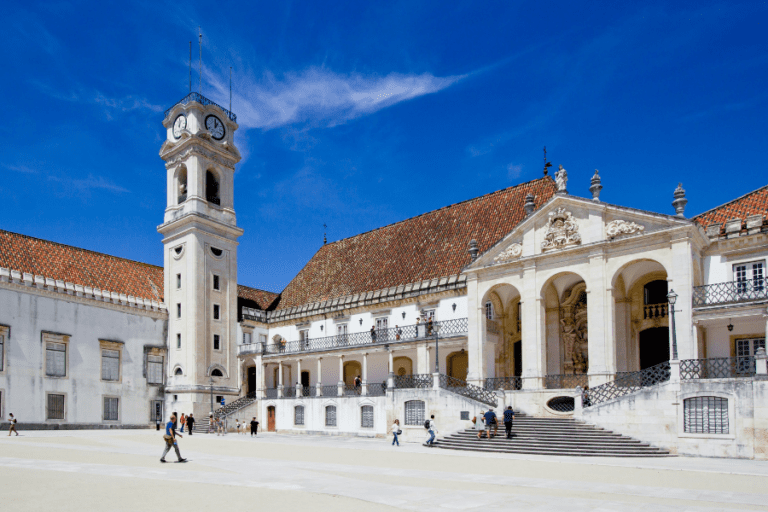- Home
- Articles
- Global Citizen
- How to Get Dual Citizenship in Mexico in 2025
How to Get Dual Citizenship in Mexico in 2025
May 30, 2025
The idea of a single, lifelong loyalty to one country feels somewhat out of step with our times, especially for forward-thinking global people.
This involves being restricted by one nation’s laws, with your future, assets and freedom of movement forever tied to the fortunes of a single government.
Dual citizenship has practical limitations and serious vulnerabilities. Aside from helping you gather more passports, it’s a powerful tool for diversifying your life, much like your investments.
A smart second passport opens doors to new markets, economic environments and alternative options for healthcare and education.
Above all, it acts as a reliable ‘Plan B’ to buffer you against political or economic uncertainties that can surface in any single country.
While acquiring another citizenship means learning the global legal and taxation dance, the advantages usually outshine the effort or initial investment.
In recent years, Mexico has become a standout choice among the growing number of countries with attractive citizenship options.
In fact, not too long ago, Mexican citizenship might have been a less obvious consideration for those planning a global future, but that time is now in the past.
Mexico’s appeal in 2025 runs much deeper than its rich culture, vibrant food, and beautiful landscapes, compelling as those are. There’s a growing recognition of the practical advantages it offers those seeking greater international flexibility and an enhanced lifestyle.
That’s exactly why this in-depth guide matters.
Pursuing dual citizenship – especially in a country with Mexico’s distinct legal systems and cultural nuances – requires more than a quick Google search.
This guide breaks down exactly how to obtain Mexican citizenship without surrendering your current one. You’ll learn about the available pathways, who qualifies, what paperwork is required, and how long the process takes – giving you the clarity and confidence you need to take your next step.
Pros and Cons of Dual Mexican Citizenship

Mexican dual citizenship has a lot of unique benefits. But, like any big decision, it’s important to understand what you’re getting into.
The Upsides of Mexican Dual Citizenship
Firstly, a Mexican passport grants access to 154 destinations – either visa-free, through a visa-on-arrival, or via electronic travel authorisation. This includes visa-free access to desirable destinations like Europe’s Schengen zone and much of Latin America.
Furthermore, as a citizen, you can live, work and study in Mexico for as long as you like – no more visa runs or haggling over residency renewals.
Then there’s easier property ownership. If you’ve considered buying property in Mexico, especially in sought-after coastal or border areas, you’ll be aware that foreigners often need to use a special bank trust, known as a fideicomiso.
As a Mexican citizen, you can sidestep this and own property directly, which can cut down on costs and give you direct control.
From a business and investment angle, being a Mexican citizen can also make life a lot easier. It means quicker access to local banking and loans, as well as potentially less red tape when setting up a business or investing in Mexican companies.
For entrepreneurs, certain industries may be more accessible to citizens, and operating locally can foster stronger connections and trust within the Mexican market.
Dual citizens who acquire Mexican citizenship by birth have full political rights, including voting and eligibility for public office. On the other hand, naturalised citizens may face restrictions on holding certain government positions.
Either way, voting and being involved in local government can make your life more interesting and connected as Mexico becomes a bigger part of your life.
The Downsides of Mexican Dual Citizenship
Dual citizenship comes with responsibilities in both Mexico and your other country (or countries) of citizenship.
You’ll need to follow Mexican law, and depending on where else you’re a citizen and where you live, you could have tax duties in more than one place.
For example, US citizens have to report their worldwide income to the IRS, no matter where they live, and this doesn’t change if you become a dual Mexican citizen.
Tax treaties – like the one Mexico has with the US – are there to help avoid paying tax twice on the same income, but you still have to pay to the US and manage the filing work unless you renounce US citizenship.
Aside from this, the actual process of getting citizenship can feel bureaucratic and take time. You’ll need to gather your required documents, meet the residency requirements and pass tests on Spanish and Mexican culture and history. It’s a journey that calls for patience and attention to detail.
Pathways to Mexican Citizenship
Mexican Citizenship by Descent (CBD)
For individuals with Mexican parentage, acquiring citizenship by descent is often the most direct route. If you have at least one Mexican parent, you are generally entitled to Mexican nationality, even if you were born outside of Mexico.
This pathway acknowledges your inherent connection to the country.
The process involves registering your birth in Mexico with the authorities and showing proof of heritage, such as your parents’ Mexican birth certificates and your own.
Mexican Citizenship by Naturalisation

For many, the most common route is naturalisation.
The naturalisation process is designed for foreign nationals who have made Mexico their home and wish to formalise their connection to the country. Typically, this involves living in Mexico legally as a resident for a certain period – generally five years.
This residency must be permanent and through the right visa or residency program. It often starts with temporary residency and goes to permanent residency before citizenship can be sought.
Aside from this pathway, being married to a Mexican citizen can shorten the residency requirement for naturalisation, usually down to two years, if certain conditions are met.
Special considerations may also apply to individuals from Latin American countries or the Iberian Peninsula (Spain and Portugal), who can also have a reduced residency period of two years.
Mexican Citizenship by Birth (Jus Soli)
Beyond these main routes, it’s worth noting that simply being born on Mexican soil automatically grants Mexican citizenship, regardless of the parents’ nationality.
Mexican Dual Citizenship: Application Process
Once you’ve identified your pathway to Mexican citizenship, the next stage is handling the application process.
Before you begin the process, you must ensure that you meet the foundational requirements.
First and foremost is your legal residency status. You must have completed the required period of continuous residency (typically five years or two years in special cases like marriage to a Mexican citizen or being from an Ibero-American country) under a valid temporary or permanent resident visa.
You’ll also need to demonstrate a clean criminal record, both from your previous countries of residence and in Mexico.
Furthermore, part of becoming a Mexican citizen involves showing your willingness and ability to integrate. You’ll need to prove a satisfactory level of proficiency in Spanish and a good understanding of Mexican history, traditions and civic values.
The SRE (Ministry of Foreign Affairs) provides guides to help applicants prepare for these tests.
The final step is to gather all your personal documents, such as your birth certificate and passport, and ensure they are signed and translated correctly into Spanish.
The Application Submission
With your eligibility confirmed and your documents in order, you can move forward with the submission to the SRE.
You will need to pay the applicable government fees for the naturalisation process.
Keep receipts for all payments, as these will form part of your application file.
Depending on your specific circumstances and the current procedures, you might be called for an interview. This is an opportunity for the authorities to clarify any points in your application and get to know you better.
After submission, there will be a waiting period as your application is processed and reviewed by the relevant authorities.
If your application is successful, the final step is to participate in a naturalisation ceremony.
Here, you will usually swear allegiance to Mexico and get your Carta de Naturalización (Certificate of Naturalisation).
Specific Guidance for US Citizens

Given the close ties and considerable number of United States citizens who choose to make Mexico their home and formalise their connection through citizenship, some specific points are worth noting for US applicants.
Firstly, as we already know, Mexico readily permits dual nationality, and so does the US.
It is, however, important for US citizens to remain aware of their ongoing obligations, such as the requirement to file US taxes if applicable and use their US passport to enter and exit the United States.
In addition, if you establish tax residency in Mexico (which is likely if you live there for a long period), you will also have tax obligations to the Mexican government, typically on your Mexican-sourced income and potentially on worldwide income under their rules.
To prevent being taxed twice on the same income, the US offers mechanisms such as the Foreign Tax Credit (FTC), which can allow you to offset taxes paid to Mexico against your US tax liability.
The Foreign Earned Income Exclusion (FEIE) might also offer relief if you meet specific residency criteria abroad.
However, it’s extremely important to stay on top of US reporting requirements, which include the annual Report of Foreign Bank and Financial Accounts (FBAR) if your foreign financial account balances exceed the threshold and any Foreign Account Tax Compliance Act (FATCA) implications.
Mexican Dual Citizenship: FAQs
Yes, since a constitutional reform in 1998, Mexican law allows its citizens to hold another nationality without losing their Mexican one, and foreigners can become Mexican citizens without renouncing their original citizenship.
Male Mexican citizens are required to register for military service when they read the age of 18. Enforcement of the rule varies but dual nationals need to be aware of this potential obligation.
You can acquire dual citizenship in Mexico primarily through birth in Mexico, by descent if you have Mexican parents or through naturalisation. Naturalisation typically requires a period of legal residency and passing cultural and language tests.
Naturalisation involves submitting documents like your birth certificate and proof of residency to the Ministry of Foreign Affairs (SRE) and passing tests. If applying through descent, you’ll register your foreign birth with Mexican authorities.
The cost for naturalisation involves a government application fee, which is around 8,755 Mexican Pesos (about US$450) in early 2025. Registering for citizenship through descent is generally free for the initial certificate, though consular fees for other services may apply.
Yes, you can obtain Mexican dual citizenship if at least one of your parents is a Mexican citizen.
US citizens seeking Mexican dual citizenship must meet Mexico’s requirements, such as residency for naturalisation or proof of Mexican parentage for citizenship by descent.
Is Mexican Dual Citizenship the Right Choice?

We love Mexico.
We love the people and the opportunities it provides.
However, Mexican citizenship alone won’t necessarily fix everything.
For one thing, it won’t magically wipe away tax bills from your home country if, like the US, it taxes citizens on their global income.
Also, while valuable, a Mexican passport isn’t a master key to visa-free travel everywhere, nor is it a one-stop shop for all your financial planning or a perfect defence against all the world’s uncertainties.
To tackle those bigger issues, you need a broader game plan.
For example, easing heavy tax burdens means setting up legal residency in places with better tax laws, which can work hand-in-hand with your citizenship.
Getting the best global access might involve carefully building a portfolio of citizenships and residencies, choosing each for what it specifically offers.
Furthermore, true resilience against global volatility stems from a holistic plan that integrates foreign bank accounts, diversified investments and a carefully crafted global lifestyle.
Mexican citizenship could be a vital cornerstone of such a plan. But its true power is often harnessed when it’s part of a bigger picture.
If you’re aiming to create a better life, our team at Nomad Capitalist is here to help you build a complete plan. We invite you to take the next step and chat with us.



Is the Portugal Golden Visa Worth It? Pros, Cons, and New Rules Explained
The Portuguese Golden Visa program allows wealthy expats to obtain legal residency in Portugal through investment. Since its introduction in 2012, the program has granted visas to over 13,000 applicants, thanks to its accessibility and potential for high investment returns. However, the 2022 Golden Visa changes increased minimum investment requirements, making the visa less accessible. […]
Read more

Holding a Dual Citizenship With Portugal: Requirements, Process, and Benefits in 2025
Holding a second citizenship means you are legally recognized as a citizen of two countries and can benefit from the rights and privileges of both. However, not all countries permit dual citizenship, and those that do enforce strict criteria for the applicants. This guide explains whether Portugal allows dual citizenship and addresses key questions and […]
Read more

Portugal Taxes for U.S. Expats: An In-Depth 2025 Guide
As an American living in Portugal, you can enjoy the country’s favorable tax system with many incentives, but you must also balance your obligations with those in the U.S. This two-pronged tax landscape can be confusing and lead to inadequate tax planning. To clear the air and share crucial information you should know about Portugal […]
Read more




